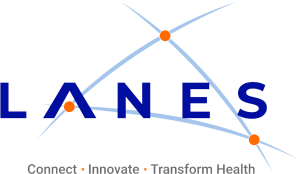In today’s complex healthcare landscape, data sharing has emerged as a crucial tool for improving patient care and outcomes. Let’s explore a real-life scenario that demonstrates the significance of data sharing and its potential to revolutionize the way healthcare is delivered to millions of individuals, particularly those relying on programs like Medi-Cal.
Sam’s Story: The Power of Data Sharing in Action
When Sam (a pseudonym), a permanent supportive housing client, experienced excruciating leg pain, his housing manager recognized the need for advanced assistance. Referring Sam to Housing for Health (HFH), an organization collaborating with Los Angeles County’s homeless services continuum, proved to be a pivotal moment. A nurse from HFH conducted a home visit and discovered the extent of Sam’s pain. However, due to a lack of documented medical history, addressing his needs effectively and efficiently became a challenge.
The nurse’s team submitted an inquiry through HFH’s health information organization(HIO), LANES, seeking Sam’s medical history. The response from the LANES revealed crucial information—a confirmed leg fracture that had been addressed at a local emergency room, along with a prescribed care plan. Armed with this knowledge, the nurse coordinated an in-home physical therapist, procured an appropriate walker, and obtained pain medication from a local pharmacy. Furthermore, the nurse arranged transportation for Sam’s follow-up appointments and reestablished visits with his primary care physician, ensuring continuity of care.
Sam’s case illustrates the profound impact of data sharing on treatment outcomes. Without the benefit of an HIO, Sam would likely have endured prolonged pain, incurred additional costs, and wasted valuable time in the emergency room. This example highlights the importance of data sharing for the 13 million Californians who rely on Medi-Cal, demonstrating that it has the potential to benefit anyone interacting with healthcare systems.
While the call for interoperability and localized data sharing is not new, California is witnessing renewed interest and activities aligned with the state’s Data Exchange Framework (DxF). Set to launch in January 2024, the DxF aims to expedite and expand the exchange of health information among healthcare, government, and social service entities. By creating new connections and efficiencies, the DxF will support the delivery of optimal outcomes through a whole person care model and value-based care. The first step, signing the Data Sharing Agreement (DSA), signifies an organization’s commitment to complying with the DxF’s policies and procedures.
Developing a data sharing strategy can seem overwhelming, but it is essential to understand what to expect and where to begin. It involves more than just sharing patient data for compliance; it also entails identifying data services that facilitate efficient patient care.
We encourage you to get in touch with our LANES team to talk about your organization’s needs and how you can ensure compliance with California’s Data Exchange Framework.



